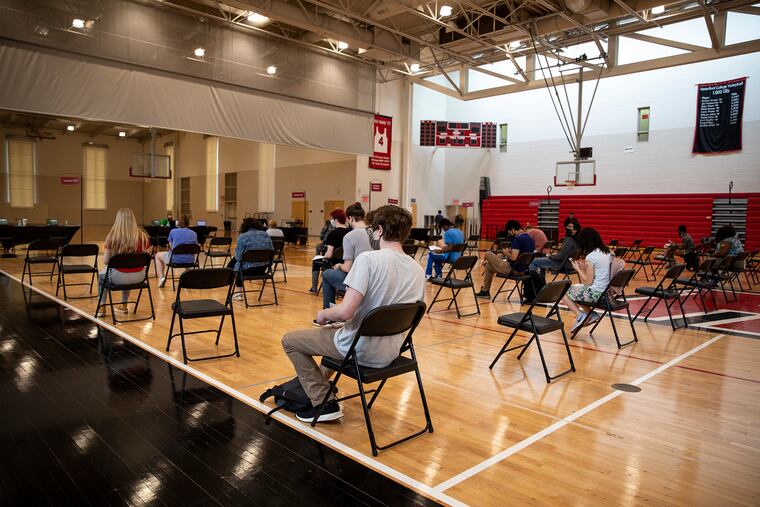Two steps colleges should take to reopen safely this month | Opinion
Campuses with vaccine mandates may believe that surveillance testing is superfluous. They're wrong.

Over the next week, colleges and universities will welcome students back to campus for what many hope to be a normal semester of classes, activities, sports, and socializing. Over 730 are mandating COVID-19 vaccination for their students, including the University of Pennsylvania, Villanova, and Drexel, with some extending the requirement to faculty and staff. The hope is that vaccination will significantly reduce infection risk on campus and keep everyone safe.
Many colleges formulated their fall plans prior to the surge of the delta variant, which is proving to be more contagious than earlier variants of the virus. Delta is poised to exploit student housing arrangements, behavior, and social habits, creating opportunities for infections even beyond what occurred last fall.
Is this time for panic or pause? It depends on whether schools take two steps to make the semester successful for all.
» READ MORE: Should colleges mandate COVID vaccines for the fall semester? | Pro/Con
Vaccination: No. 1 on every college administration’s list should be vaccination, since campus COVID-19 resiliency depends on how widely the campus population is vaccinated. Though some students are now returning to campus after having been previously infected over the past year, with each new variant, ongoing immunity remains open for further study. Vaccination provides the most reliable protection. High vaccination rates on campus, whether mandated or voluntary, give the greatest opportunity to limit campus micro-outbreaks.
For those campuses with high vaccination rates, breakthrough infections mean that infections will spike for the first several weeks of the semester. The good news is that the personal health risk to students will be small.
For those campuses without vaccine mandates and low vaccination rates among students, expect surges in student infections, with breakthrough infections occurring in vaccinated faculty and staff.
The greatest health risk will be to older faculty and staff, those over 50 years old. Their best protection is the vaccine, but they will likely have higher levels of exposure to the virus than they had last year, when many educational activities went virtual and they had no physical contact with students and virus outbreaks. With such people returning to campus full time, their personal risk will be elevated, though breakthrough infection hospitalization and death rates continue to be sufficiently low to keep most of them safe.
Regular testing: Campuses with vaccine mandates may believe that surveillance testing is superfluous, requiring that only those with symptoms be tested. They are mistaken. Only testing those with symptoms will push positivity rates sky-high. With so many people asymptomatic and untested, infections will unpredictably spread across campus. The emergence of breakthrough infections suggests that testing, as much as weekly, among all people in the community is critical to track the spread of the virus and its penetration into the vaccinated population.
» READ MORE: West Chester will randomly test students who don’t submit proof of vaccination
Stanford and Northeastern are part of a small cadre of national universities implementing the dual policy of mandatory vaccination and testing. This will permit estimation of breakthrough infection rates by vaccine manufacturer, providing a way to assess how well the vaccines are standing up to delta, and identify new variants that may emerge during the fall semester.
With talk of booster shots needed in the near future, campuses with high vaccination rates can serve as a valuable repository of data on breakthrough infections and help identify when the potency of the first wave of vaccinations is waning.
We have learned much about the virus and COVID-19 over the past year. These lessons suggest that campuses can stay open with the appropriate precautions. Knee-jerk reactions of shutdown threats, student punishments, and panic will expose campuses that had not planned well for the inevitable surge of infections.
Keeping everyone infection-free is a noble but unrealistic goal. Keeping everyone safe is plausible.
The goal is to preserve in-person education, since another year of virtual education is the biggest threat the virus poses to college students and their well-being.
Success can be achieved when campus communities center on people working together to fulfill their missions of education in a safe and productive environment for all. As students return to campus, that lofty goal is achievable and in everyone’s best interest.
Sheldon H. Jacobson is a founder professor of computer science at the Carle Illinois College of Medicine at the University of Illinois at Urbana-Champaign. Janet Jokela is acting regional dean of the University of Illinois College of Medicine at Urbana.